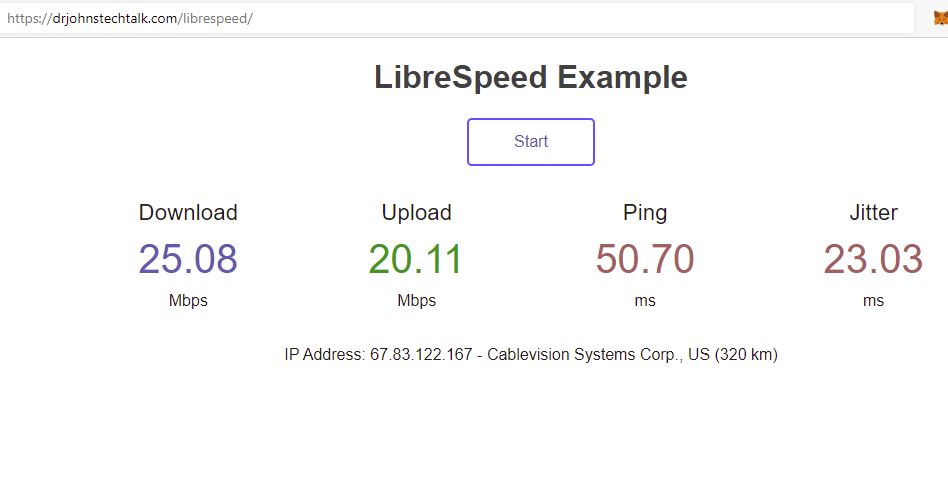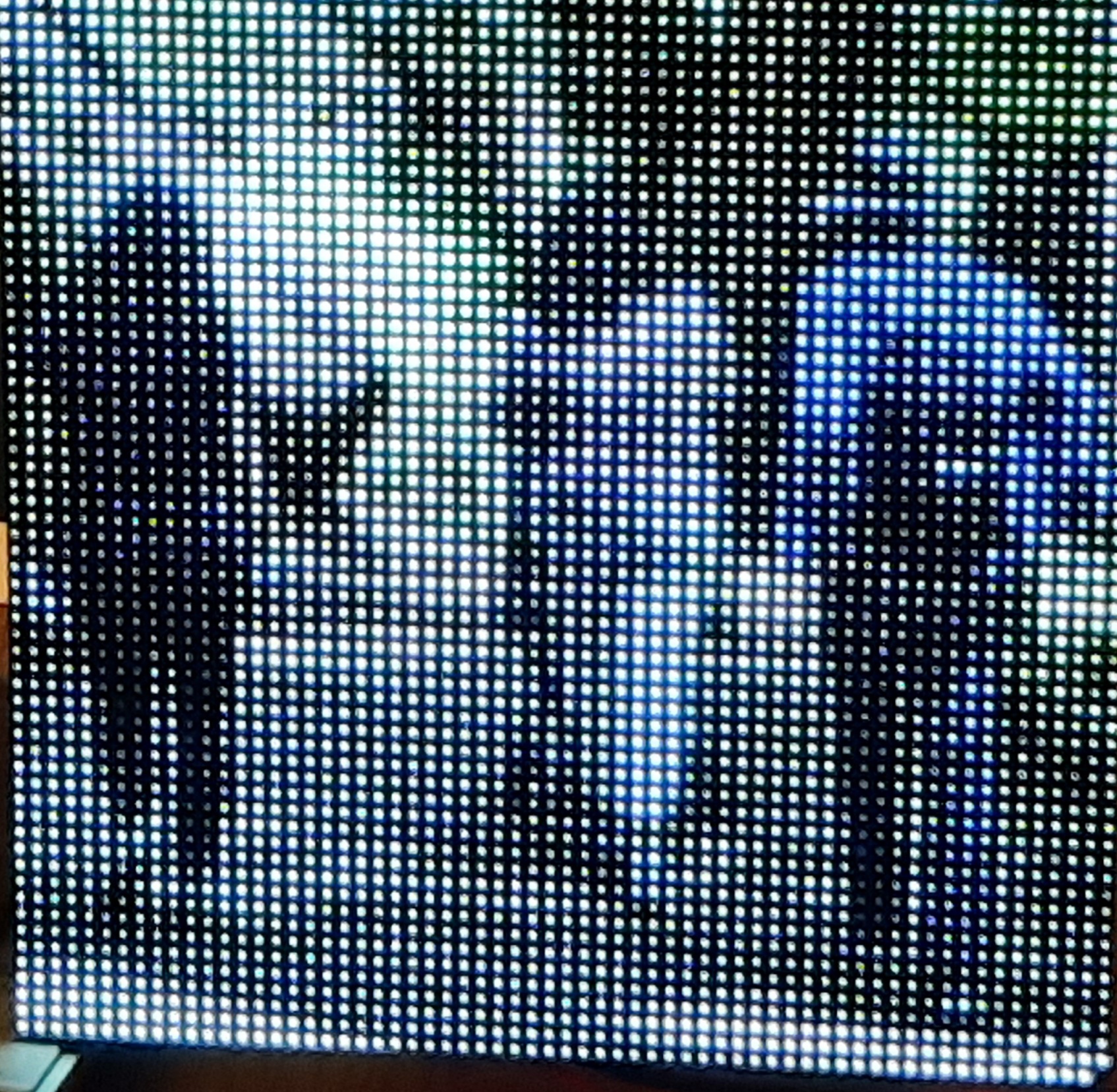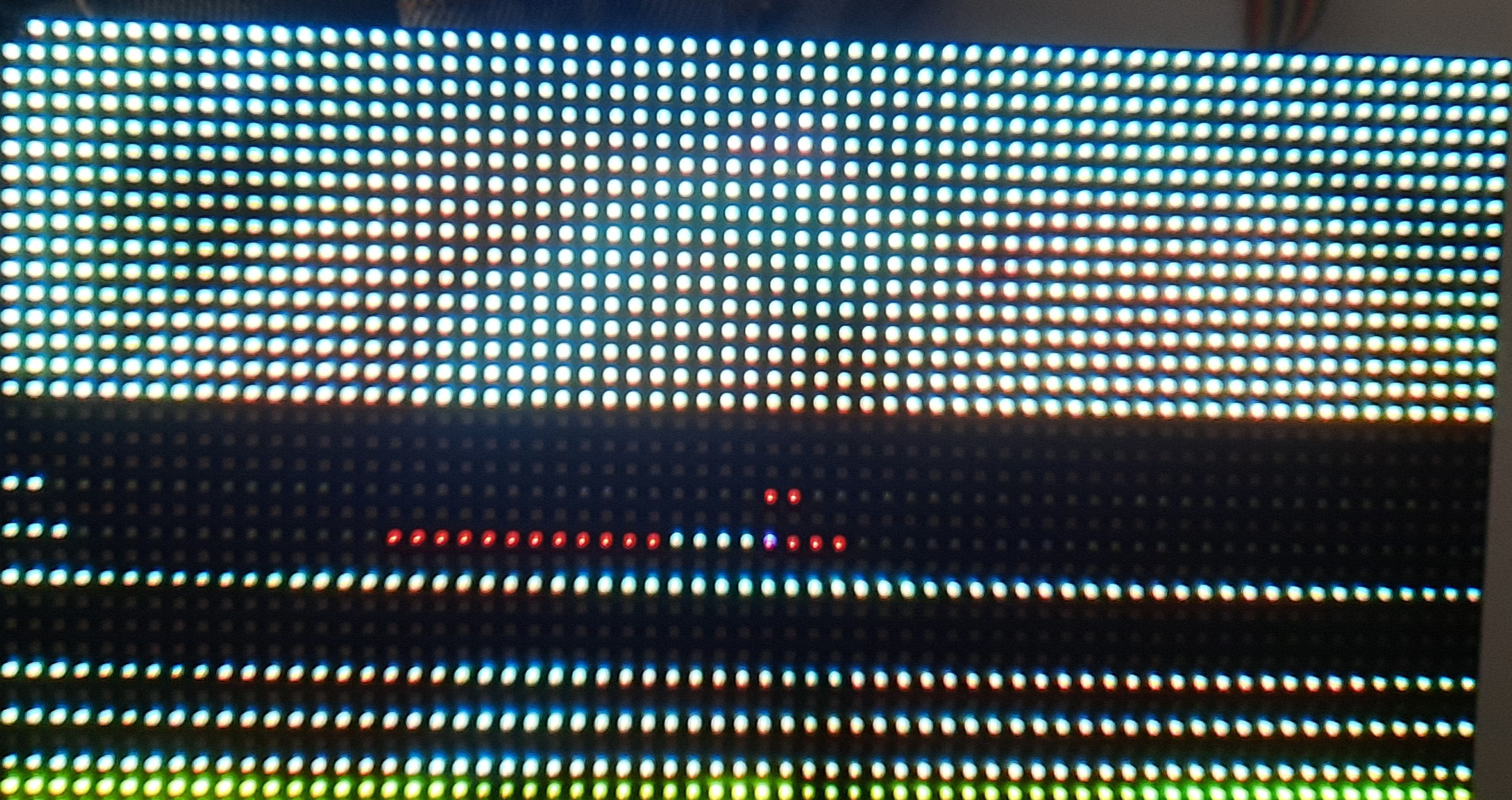Intro
Here I’ve combined work I’ve done previously into one single useful application: I can initiate the live streaming of our band practice on YouTube with the click of a single button on a remote control, and stop it with another click.
Equipment
Raspberry Pi 3 or 4 with Raspberry Pi OS, e.g., Raspbian Lite is just fine
Logitech webcam or USB microphone
USB extender (my setup needed this, others may not)
Universal USB-based remote control – see references for a known good one
Method 1
In this method I rapidly blink the onboard red power (PWR) LED of the RPi while streaming is active. Outside of those times it is a solid red. This is my preferred mode – it’s a very visible sign that things are working. I am very excited about this approach.
blinkLED.sh
#!/bin/sh
# DrJ 8/30/2021
# https://www.jeffgeerling.com/blogs/jeff-geerling/controlling-pwr-act-leds-raspberry-pi
# put LED into GPIO mode
echo gpio | sudo tee /sys/class/leds/led1/trigger > /dev/null
# flash the bright RED PWR (power) LED quickly to signal whatever
while /bin/true; do
echo 0|sudo tee /sys/class/leds/led1/brightness > /dev/null
sleep 0.5
echo 1|sudo tee /sys/class/leds/led1/brightness > /dev/null
sleep 0.5
done
shineLED.sh
#!/bin/sh
# DrJ 8/30/2021
# https://www.jeffgeerling.com/blogs/jeff-geerling/controlling-pwr-act-leds-raspberry-pi
# put LED into GPIO mode
echo gpio | sudo tee /sys/class/leds/led1/trigger > /dev/null
# turn on the bright RED PWR (power) LED
echo 1|sudo tee /sys/class/leds/led1/brightness > /dev/null
broadcastswitch.sh
#!/bin/bash
# DrJ 8/2021
# Control the livestream of audio to youtube
# works in conjunction with an attached keyboard
# I use bash interpreter to give me access to RegEx matching
HOME=/home/pi
log=$HOME/audiocontrol.log
program=continuousaudio.sh
##program=tst.sh # testing
PGM=$HOME/$program
# de-press ENTER button produces this:
match="1, 28, 0"
epochsOld=0
cutoff=3 # seconds
DEBUG=1
ledtime=10
#
echo "$0 starting monitoring at "$(date)
# Note the use of script -q -c to avoid line buffering of the evread output
script -q -c $HOME/evread.py /dev/null|while read line; do
[[ $DEBUG -eq 1 ]] && echo line is $line
# seconds since the epoch
epochs=$(date +%s)
elapsed=$((epochs-$epochsOld))
if [[ $elapsed -gt $cutoff ]]; then
if [[ "$line" =~ $match ]]; then
echo "#################"
echo We caught this inpupt: $line at $(date)
# see if we are already running continuousaudio or not
pgrep -f $program>/dev/null
# 0 means it's been found
if [ $? -eq 0 ]; then
# kill it
echo KILLING $program
pkill -9 -f $program; pkill -9 ffmpeg
pkill -9 -f blinkLED
echo Shine the PWR LED
$HOME/shineLED.sh
else
# start it
echo Blinking PWR LED
$HOME/blinkLED.sh &
echo STARTING $PGM
$PGM > $PGM.log.$(date +%m-%d-%y:%H:%M) 2>&1 &
fi
epochsOld=$epochs
fi
[[ $DEBUG -eq 1 ]] && echo No action taken. Continue to listen
fi
done
The crontab entry and the referenced files are the same as in Method 2.
Method 2
In method 2 I flash the built-in LED on the webcam for a few seconds before starting the audio, and again when the streaming has terminated – as visible signal that the button press registered.
broadcastswitch.sh
#!/bin/bash
# DrJ 8/2021
# Control the livestream of audio to youtube
# works in conjunction with an attached keyboard
# I use bash interpreter to give me access to RegEx matching
HOME=/home/pi
log=$HOME/audiocontrol.log
program=continuousaudio.sh
##program=tst.sh # testing
PGM=$HOME/$program
# de-press ENTER button produces this:
match="1, 28, 0"
epochsOld=0
cutoff=3 # seconds
DEBUG=1
ledtime=10
#
echo "$0 starting monitoring at "$(date)
# Note the use of script -q -c to avoid line buffering of the evread output
script -q -c $HOME/evread.py /dev/null|while read line; do
[[ $DEBUG -eq 1 ]] && echo line is $line
# seconds since the epoch
epochs=$(date +%s)
elapsed=$((epochs-$epochsOld))
if [[ $elapsed -gt $cutoff ]]; then
if [[ "$line" =~ $match ]]; then
echo "#################"
echo We caught this inpupt: $line at $(date)
# see if we are already running continuousaudio or not
pgrep -f $program>/dev/null
# 0 means it's been found
if [ $? -eq 0 ]; then
# kill it
echo KILLING $program
pkill -9 -f $program; pkill -9 ffmpeg
sleep 1
echo turn on led for a few seconds
$HOME/videotst.sh &
sleep $ledtime
pkill -9 ffmpeg
else
# start it
echo turn on led for a few seconds
$HOME/videotst.sh &
sleep $ledtime
pkill -9 ffmpeg
sleep 1
echo STARTING $PGM
$PGM &
fi
epochsOld=$epochs
fi
[[ $DEBUG -eq 1 ]] && echo No action taken. Continue to listen
fi
done
videotst.sh
#!/bin/sh
# just to get the webcam to light up...
ffmpeg -i /dev/video0 -f null - < /dev/null > /dev/null 2>1 &
crontab entry
@reboot sleep 15; /home/pi/broadcastswitch.sh > broadcastswitch.log 2>&1
continuousaudio.sh and ffmpegwireless6.sh
See this post: https://drjohnstechtalk.com/blog/2019/04/live-stream-to-youtube-from-a-raspberry-pi-webcam/
evread.py
See this post: https://drjohnstechtalk.com/blog/2020/12/how-to-create-a-software-keyboard/
The idea
I press the Enter button once on the remote to begin the livestream to YouTube. I press it a second time to stop.
By extension this could also control other programs as well (like the photo frame). And other keys could be mapped to other functions. Record-only, don’t livestream, anyone?
I want to do these things because it’s a little tight in the room where I want to livestream – hard to get around. So this keeps me from having to squeeze past other people to access the RPi to for instance power cycle it. In my previous treatment, I had livestreaming start up as soon as the RPi booted up, which means it would only stop when it was similarly powered off, which I found somewhat limiting.
The purpose of videotst.sh in Method 2
videotst.sh serves almost no purpose whatsoever! It can simply be commented out. It’s somewhat specific to my webcam.
You see, I wanted to get some feedback that when I pressed the ENTER button the remote control the RPi had read that and was trying to start the livestream. I thought of flashing one of the built-in LEDs on the RPi. I still need to look into that.
With the robotics team we had soldered on an external LED onto one of the GPIO pins, but that’s way too much trouble.
So what videotst.sh does for me is to engage the webcam, specifically its video component, throwing away the actual video but with the net result that the webcam’s built-in green LED illuminates for a few seconds! That lets me know, “Yeah, your button press was registered and we’re beginning to start the livestream.” You see, because when you run ffmpegwireless6.sh with this webcam, it’s all about the audio. It only uses the audio of the webcam and thus the green “in use” LED never illuminates, unfortunately, while it is livestreaming the pure audio stream. So, similarly, when you press ENTER a second time to stop the stream I illuminate the webcam’s LED for a few seconds by using videotst.sh once again.
Techniques developed for this project
evread.py does some nasty buffering of its output, meaning, although it dos read the key presses on the remote, it holds the results “close to its chest,” and then spits them out, all at once, when the buffer is full. Well, that totally defeats the purpose needed here where I want to know if there’s been a single click. After some insightful Internet searches (note that I did not use Google as a verb, a practice I carry into my personal communication) I discovered the program script, which, when armed with the arguments -q -c, allows you to unbuffer the output of a program! And, it actually works. Cool.
And I made the command decision to “eat” the input. You see the timer of 3 seconds in broadcastswitch.sh? After you’ve done any button press it throws away any further button presses for the next three seconds. I just think that’ll reduce the misfires. In fact, I might take up the practice of double-clicking the ENTER button just to be sure I actually pressed it.
I’m using the double bracket notation more in my bash scripts. It permits use of a RegEx comparison operator. =~. I love regular expressions. More the perl style, PCRE, while this uses extended regular expressions, ERE. But I suppose those are good as well.
Getting control over the power LED was a nice coup. I’m only disappointed that you cannot control its brightness. In the dark it throws off quite a bit of light. But you cannot.
The green LED does not seem nearly as bright so I chose not to play with it. What I don’t want is to have to strain to see whether the thing is livestreaming or not.
Of course getting the whole remote control thing to work at all is another great advancement.
Techniques still to be developed
I still might investigate using voice-driven commands in place of a remote. Obviously, that’s a big nut to crack. Even if I managed to turn it on, turning it off while ffmpeg has commandeered the audio channel is even harder. I wonder if ffmpeg can split the audio stream so another process can be run alongside it to listen for voice commands? Or if an upstream process in front of ffmpeg could be used for that purpose? Or simply run with two microphones (seems wasteful of material)?? Needs research.
Suppose you want to take this on the road? Internet service can be unreliable after all. It’s well known you can power the RPi 3 for many hours with a small portable battery. So how about mapping a second button on the remote to a record-only mode (using the arecord utility, for instance)?? Then you can upload the audio at a time of you convenience. That’s something I can definitely program if I find I need it.
Lingering Problems with this approach
Despite all the care I’ve taken with the continuousaudio.sh script, still, there are times when YouTube does not show that a livestream is going on. I have no idea why at this point. If I knew the cause, I’d have fixed it!
As the livestream aspect of this is actual immaterial to me, I will probably switch to a pure recording mode where I upload in a later step – perhaps all done by the remote control for pure convenience.
Since this blog post has become popular, I may keep it preserved as is and start a new one for this recording approach as some people may genuinely be interested in the livestream aspect.
A very rough estimate of the failure rate is maybe as high as 50% but probably no lower than 25%. So, not great odds if you’re relying on success.
There’s another issue which I consider more minor. The beginning of the stream always sounds like a tape played on fast forward for a few seconds. The end also cut off a few seconds early I think.
Conclusion
We have presented a novel approach to livestreaming on a Raspberry Pi 3 using a remote control for added convenience. All the techniques were home-developed at drjohnstechtalk.com. The materials don’t cost much and it really does work.
References and related
Rii infrared remote control – only $12: Amazon.com: Rii MX3 Multifunction 2.4G Fly Mouse Mini Wireless Keyboard & Infrared Remote Control & 3-Gyro + 3-Gsensor for Google Android TV/Box, IPTV, HTPC, Windows, MAC OS, PS3 : Electronics
25′ USB 2 extender for placing a webcam or USB mic at a distance from the RPi, $15: Amazon.com: HDE USB Extension Cable (USB 2.0 Type A Male to Female) High Speed Data and Power Extension Cable with Active Repeater (25 ft) : Electronics
Using Remote control to interact with a RPi-based photo frame.
ffmpeg settings to send just audio to YouTube, suppressing video
Battery to make the RPi 3 portable, $17: Amazon.com: Omars Power Bank 10000mAh USB C Battery Pack Slimline Portable Charger with Dual USB Output Compatible with iPhone Xs/XR/XS Max/X, iPad, Galaxy S9 / Note 9 : Cell Phones & Accessories. I’m not exactly sure what to do for an RPi 4 however.
How to control the power to the RPi’s LEDs: https://github.com/mlagerberg/raspberry-pi-setup/blob/master/5.2-leds.md


